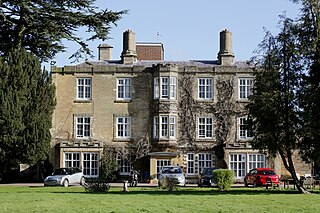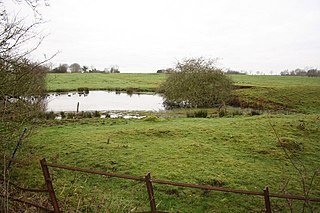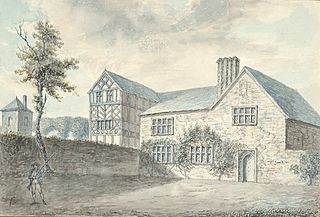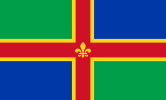Long Bennington Priory was a priory in Lincolnshire, England.

A priory is a monastery of men or women under religious vows that is headed by a prior or prioress. Priories may be houses of mendicant friars or nuns, or monasteries of monks or nuns. Houses of canons regular and canonesses regular also use this term, the alternative being "canonry".
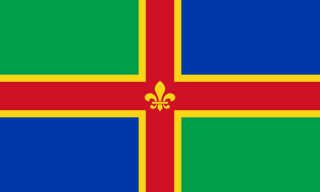
Lincolnshire is a county in eastern England, with a long coastline on the North Sea to the east. It borders Norfolk to the south east, Cambridgeshire to the south, Rutland to the south west, Leicestershire and Nottinghamshire to the west, South Yorkshire to the north west, and the East Riding of Yorkshire to the north. It also borders Northamptonshire in the south for just 20 yards (18 m), England's shortest county boundary. The county town is the city of Lincoln, where the county council has its headquarters.

England is a country that is part of the United Kingdom. It shares land borders with Wales to the west and Scotland to the north-northwest. The Irish Sea lies west of England and the Celtic Sea lies to the southwest. England is separated from continental Europe by the North Sea to the east and the English Channel to the south. The country covers five-eighths of the island of Great Britain, which lies in the North Atlantic, and includes over 100 smaller islands, such as the Isles of Scilly and the Isle of Wight.
The church at Long Bennington was granted by Ralf de Fougères, to the Cistercian abbey of Savigny in 1163, but it seems that the priory did not come into existence until around the end of the twelfth century.

Long Bennington is a linear village and civil parish in South Kesteven district of Lincolnshire, England. It lies just off the A1 road, 7 miles (11 km) north of Grantham and 5 miles (8 km) south of Newark-on-Trent.
There is mention of a warden or keeper of the house, appointed from Savigny, on the Patent Rolls of 1319 and 1323. It is believed there was only one monk in residence there. The priory was taken into the king's hands, and restored again, in 1339–40.
In 1401 the priory was being farmed for the king by the prior, Michael Rogers, and one Michael Montayn. In 1462 it was granted, with other property of Aliens, for the support of the priory of Mount Grace in Yorkshire. [1]

Mount Grace Priory, in the parish of East Harlsey, North Yorkshire, England, within the North York Moors National Park, is today the best preserved and most accessible of the nine medieval Carthusian houses (charterhouses) in England. Set in woodlands, it was founded in 1398 by Thomas Holland, 1st Duke of Surrey, the son of King Richard II's half-brother Thomas, Earl of Kent. It was the last monastery established in Yorkshire, and one of the few founded anywhere in Britain in the period between the Black Death (1349–50) and the Reformation. It was a fairly small establishment, with space for a prior and twenty-three monks.

Yorkshire, formally known as the County of York, is a historic county of Northern England and the largest in the United Kingdom. Due to its great size in comparison to other English counties, functions have been undertaken over time by its subdivisions, which have also been subject to periodic reform. Throughout these changes, Yorkshire has continued to be recognised as a geographical territory and cultural region. The name is familiar and well understood across the United Kingdom and is in common use in the media and the military, and also features in the titles of current areas of civil administration such as North Yorkshire, South Yorkshire, West Yorkshire and East Riding of Yorkshire.


